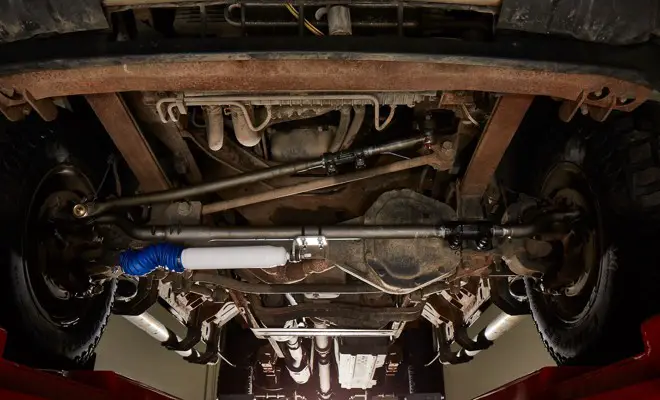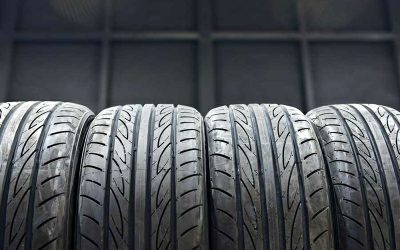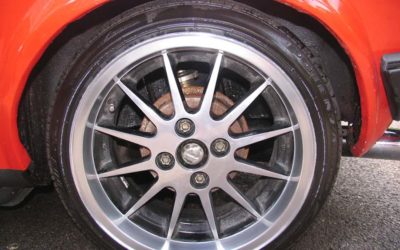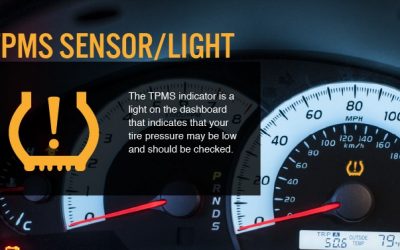Imagine one day while you are driving your lovely car to work like every normal day. Suddenly, you take a turn, and the steering wheel moves much further than you expected.
Consequently, you almost hit a tree on the pavement. What a bad way to start the day. Then you realize the loose steering wheel is the hidden culprit behind such an accident.
No one knows your car better than you do. Therefore, if you are having trouble with the steering wheel, you must address the issue as soon as possible.
A multifunctional steering wheel makes it challenging to keep your car in a straight line. The worst thing is that it also raises your chances of getting into a crash.
What Does A Loose Steering Wheel Feel Like?
Overturning when taking a turn is the most noticeable sign of a loose steering wheel. Whenever the hand wheel moves a bit further than you intended, it is time to make a constant correction for the movement.
To your knowledge, a knocking sound is also among the possibilities. If you strike a pothole or bump on the bad roads and hear a banging or knocking noise, it is an indicator of looseness.
To confirm your diagnosis, try driving on the highways or any roads that allow you to go at high speed. If you detect a shudder in the wheel or a feeling that the car is swaying unexpectedly, it is undeniable evidence of a steering wheel vibration.
If you find a similar situation on your car, it is time to take your automobile to a good mechanic right away since the steering might degrade at any time. Or else, your life will be placed in great danger as any separation caused by degradation could result in a deadly accident. Don’t hesitate to take action now!
Causes Of A Loose Steering Wheel

Old Car Tires
After a long time, a car tire will be torn down and distorted, causing the steering wheel to shake after each round. There will be a vibration every time the automobile turns around. In this case, a new tire is what you need to address the problem.
Inferior Tire Pressure
Great tire pressure is often rooted in high tire inflation. Consequently, it can decrease the driving wheel’s flexibility or cause an unbalanced tire pressure issue.
Driving on rough or bad-condition roads is the recipe for a loose steering wheel. For that reason, you should inflate the tires properly based on the standard pressure table to avoid this situation.
Uneven Wheel
Another reason explained for a loose steering wheel is an unbalanced set of wheels. When the weight is not distributed evenly on each wheel, drivers can generate extra forces that can cause a shaky steering wheel.
The hand wheel even vibrates more, particularly when driving at high speed. The best approach, in this case, is to rebalance the wheels and attach some tiny seals with varying weights to your vehicle.
Uneven Tire Wear
Uneven tire wear is also among the most common reasons. When the steering wheel feels loose, the solution is pretty straightforward. Simply replace or rotate the tires to get the job done.
Loosen Wheel Lug Nuts
After your car has been in service for a while, the screws responsible for keeping the wheel will get loosened. This happens frequently and is unavoidable. It renders the wheel to spin indefinitely, which is seriously hazardous.
Falling into these circumstances, you have no choice but to pull over the car instantly, inspect the car screws, and tighten any loose ones.
Brake Issue
The brake issue appears to be another possible reason that people often overlook. If you find your steering wheel shaky every time you hit the brake, it might be because the brake disc is not flat. The substandard brake disc can result in uneven friction when braking and lead to a loose steering wheel.
Another sign is that when you drive quicker, the vibration will get worse, and there will be a smoky smell the moment you stop the car. To overcome it, we suggest flattening the brake disc.
Suspension System Malfunction
After spotting the shaky steering wheel issue, you should perform a visual inspection of the suspension as well. A weak suspension might also explain the lack of balance between the wheels and the counterweights.
What’s more concerning is that neglecting these issues will harm the struts, shocks, and other components. As a result, it poses a serious threat to the driver’s safety.
For precision, you should examine the suspension and whether the steering wheel gets loosened at a high or moderate speed.
Make sure to go through every part of your car carefully, such as corroded components, worn shocks, loose connections, or an uneven steering shaft, as these are often the root of looseness.
The Wheel’s Deflection
A misplaced steering wheel is a classic symptom of a steering wheel vibration. The most likely cause is that your driving wheel angle is incorrect. The divergence normally occurs after a period of time, although it may happen sooner, depending on your driving skills. Avoid potholes and drive at a steady speed to reduce this deviation.
Impaired Bearings
If you do not lubricate the bearings periodically, it can also cause the mentioned problem. Bearings play an indispensable role in preventing the wheels from friction and the weight of your car.
The bearings are assembled as a united whole. Therefore, when they malfunction, they immediately affect the drive shaft, causing the steering wheel to become loose.
Worn Tie Rods
A tie rod is in charge of connecting the wheels to the suspension and steering parts, which keep your car in order. This part can easily get damaged under various bad conditions, such as rocky roads, potholes, or speed bumps.
Once it is torn down, it will be unable to keep your tires in the exact position and will most likely loosen the steering wheel.
How Is Your Steering Wheel Repaired?
When the auto mechanic receives your automobile, he will perform several tests to determine the root of the issue.
They will start by lifting the car and removing the wheels. This step is to check the state of the suspension and steering system components to see what needs fixing or changing.
For instance, if old tie rods are the source of the problem, they will evaluate the surface defects and make a brand new replacement if required. Not even yet, they will have to make sure that the new one is properly greased after the implementation.
If the pitman’s arm shows any signs of tearing down, the mechanic will take it off the track bar and install a new one. It is crucial that the pitman’s arm be tightened firmly. The work still continues after the installation. Once finished with the replacement, the mechanic will carry out another extensive check to confirm that the new part functions perfectly.
When it comes to worn ball joints, the auto mechanic will detach the control arm to access the defective ball joint. As always, he will replace it with a better one. Afterward, recheck once again to ensure everything functions smoothly. Also, the new ball joint should be adequately lubricated so that it can last as long as possible.
Conclusion
Being aware of fully controlling your car when driving is crucial. For that reason, you should never let any problems exist with your daily vehicle. In this circumstance, you should not procrastinate on repairing your loose steering wheel.
For the safety of you and everybody around you, bring your car to a trusted auto mechanic immediately or follow all our listed guides. To conclude, the most integral thing is to check and preserve your buddy frequently to make sure that it is always in good working condition.








